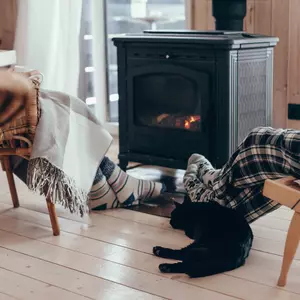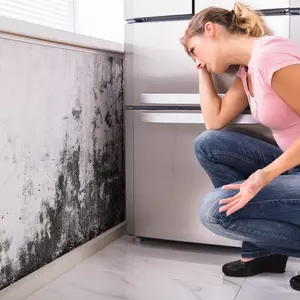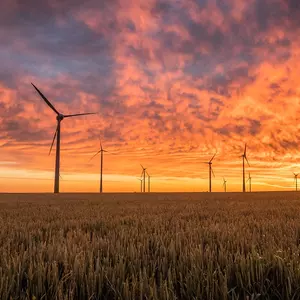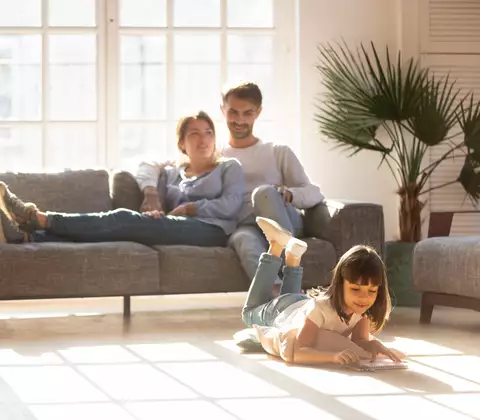
CO2 in the air
Factors, consequences, limit values
Did you know that people also breathe out CO2?
We breathe out as much as a small vehicle emits over a 10 km drive. If you spend a lot of time in an enclosed area with a lot of people, the increasing CO2 concentration will gradually make the air feel stale. But what exactly is CO2, and what limit values apply?
What exactly is CO2?
CO2, or carbon dioxide, is an odourless and tasteless gas. CO2 molecules consist of one carbon atom and two oxygen atoms. It is found everywhere in the air we breathe.
Carbon dioxide occurs naturally in the air in low concentrations. Carbon dioxide is a byproduct of:
- burning oil, gas and coal,
- rotting organic material,
- ripening fruit and vegetables
- and animal and human respiration.
Composition of air
The air we breathe is made up of a mixture of different gases:
- Nitrogen (N2) = 78.08%
- Oxygen (O2) = 20.95%
- Argon (Ar) = 0.93% • Carbon dioxide (CO2) = 0.04%
The air also contains traces of hydrogen, water vapour, helium, neon and krypton.
Carbon dioxide occurs naturally in the air in low concentrations. Examples of CO2 emissions are:
- the combustion of the fossil fuels oil, gas and coal,
- the rotting of organic matter,
- the ripening of vegetables and fruits and
- as already mentioned the breathing of humans and animals.
CO2 tax from January 2021
What does it mean for consumers?
The CO2 tax came into effect in January 2021 with a view to significantly reducing Germany’s CO2 emissions and meeting the EU’s climate targets by 2030.
The tax is payable by suppliers of raw materials. The CO2 duty will be passed on to consumers in the price of gas, petrol, diesel and heating oil. This means that the CO2 tax may make things more expensive for you at the filling station or when pay your energy bills. The charge will go up each year, from 25 euros per ton of CO2 to 55 euros per ton of CO2 by 2025.
The government intends to use the tax proceeds to boost the economy and combat climate change.
The higher costs will hopefully incentivise consumers to switch to technologies that are better for the environment, like heat pumps. You can also save money by insulating exposed heating pipes and having your heating system serviced on a regular basis.
Air purifiers for fresh, virus-free air
Having a healthy indoor environment is more important now than ever before. Reducing viral loads is particularly important in areas where lots of people gather, and sometimes manual ventilation isn’t enough.
It’s much more efficient to use an air purifier like a WOLF AirPurifier with a high-performance HEPA (High Efficiency Particulate Air/Arrestance) filter. This filter reduces the concentrations of viruses, bacteria and pollutants in the air by up to 99.995%. WOLF’s whisper-quiet air purifier also neutralises odours. The presence detector guaranteed additional efficiency by ensuring that the system is deactivated when no-one’s is using the room.
The AirPurifier is also suitable for installation in rooms of up to 60 m2 which require enhanced levels of air purification, like nurseries, schoolrooms, restaurants, offices, conference rooms, medical practices and fitness centres.
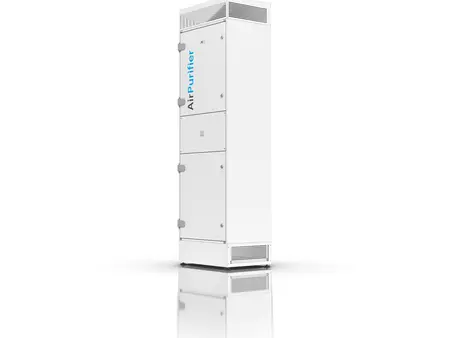
CO2 limits
CO2 in the air is measured in parts per million (ppm). Air quality in enclosed areas is classified based on the amount of carbon dioxide in the air.
- CO2 level below 1,000 ppm = safe
- CO2 level between 1,000 ppm and 2,000 ppm = hygiene issues – ventilation required
- CO2 level below 2,000 ppm = unacceptable – ventilation must be assessed, additional measures may be required
Air quality in schoolrooms is frequently unacceptable.
Room ventilation
CWL-2
The most compact in its class, extremely quiet and highly efficient – the new CWL-2 series from WOLF.
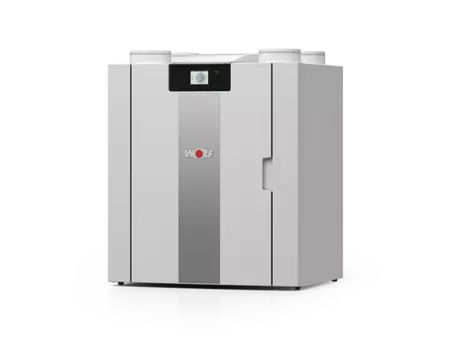
The consequences of high CO2 levels
Studies have shown that people feel well in areas where the CO2 level is below 1,000 ppm, and start feeling unwell at around 2,000 ppm. High CO2 levels can lead to the following problems:
- higher respiratory rate
- increased risk of disease, e.g. Covid-19
- headaches
- difficulty in concentrating
- poor general performance
The role of CO2 in climate change
Carbon dioxide is a greenhouse gas and a major driver of global warming. Human activity, particularly the combustion of fossil fuels like gas, coal and natural gas, has caused the amount of CO2 in the atmosphere to increase dramatically over the last few decades.
CO2 levels have reached 400 ppm, compared to 280 ppm before the industrial revolution. Even though we know all about the dangers of carbon dioxide, it is still on the rise. As a greenhouse gas, CO2 traps heat in the atmosphere.
We need the greenhouse effect to a certain extent. Without it, Earth would be a ball of ice. However, it is not good if much of the heat coming in from the sun's rays is retained. Because the more CO2 there is in the atmosphere, the warmer the climate on earth. Unfortunately, humanity is currently discharging around 32 billion tons of CO2 into the atmosphere every year.
Not all of the CO2 we produce stays in the atmosphere - around a quarter is stored in the world’s oceans. Plants use another quarter. They absorb CO2 and combine it with light and water to synthesise sugar and oxygen.
The sugar is used to build plant cells, while the oxygen stays in the atmosphere. A single tree can trap at least 10 kg of CO2 per year. All of that CO2 is released whenever a tree is felled and burnt.

How to achieve a healthier indoor environment
Providing a healthy indoor environment is clearly vital for people’s health and wellbeing. Here’s some advice for how you can improve your air quality long term:
Put plants in the room
Use candles as little as possible
Don’t smoke
Avoid using chemical cleaning agents
Switch off electric equipment when it’s not in use
Use mechanical ventilation or open your windows fully several times a day
Conclusion
Carbon dioxide occurs naturally in the atmosphere.
Having too much CO2 in a room is bad for your health and affects the indoor environment. Too much CO2 in the atmosphere leads to global warming.
